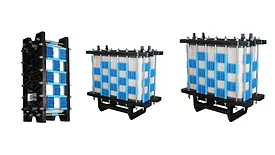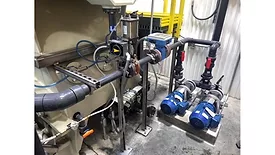Home » wastewater
Articles Tagged with ''wastewater''
Pumps/Vacuums/Weighing
Cavity Pump for Longer Lifecycles Enters North America
February 7, 2024
Elevating TOC Testing to Top of To-Do List
Companies need to establish that their water system is adequately designed, controlled, maintained and monitored to ensure that it is consistently producing water for its intended use.
October 7, 2022
How two industry leaders invest to save the water supply as scarcity grows
Kraft Heinz and Nestlé Waters North America sustainability leaders say protection of the lifeblood resource will require looking outside the factory walls
October 28, 2020
Wastewater Treatment
Why you may want to think seriously about wastewater treatment
With services and capabilities from POTWs decreasing, food and beverage processors will have to pick up the slack, but at what cost?
July 24, 2020
Engineering R&D
Separate fats, oils and grease at your facility
Device generates saleable biofuel and water clean enough to go to the local POTW
July 17, 2020
Fabulous Food Plants
Hispanic Cheese Makers' fabulous food plant sets the bar for reducing waste
Hispanic Cheese Makers’ wastewater lagoons are a big project, but a small part of the company’s overall sustainability goal
December 12, 2018
Elevate your expertise in food engineering with unparalleled insights and connections.
Get the latest industry updates tailored your way.
JOIN TODAY!Copyright ©2025. All Rights Reserved BNP Media.
Design, CMS, Hosting & Web Development :: ePublishing












